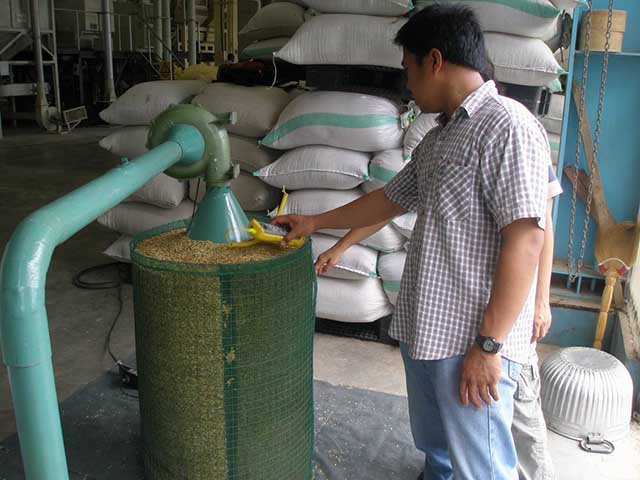Mechanical drying systems
In this system, mechanical dryers are used to remove water from wet grains by forcing either ambient air or heated air through the grain bulk. This is done through:
- Heated air drying - employs high temperatures for rapid drying. The drying process is terminated when the desired final moisture content is reached. It uses the following types of dryer:
- Batch dryer - can be used by farmers, contractors, and small rice mills
- Re-circulating batch dryer - can be used by commercial rice mills and cooperatives
- Continuous flow dryer - not very common, but used by some larger billing enterprises that handle large volumes of wet paddy
- Low-temperature drying or in-store drying - controls the relative humidity rather than the temperature of the drying air so that all grain layers in the deep bed reach equilibrium moisture content. This can be done using the
- In/store dryer - produces very high quality grains but requires long drying time, i.e., four days to two weeks
Read: Heated air drying versus low-temperature drying
- Solar drying - latest drying technology that is able to simulate sun drying even during rainy conditions. This is done through:
- Solar bubble dryer - can be locally-built and used by smallholder farmers
- Grain cooling - cools the grain to safe storage conditions instead of drying it, allowing grains to be conserved for longer periods
